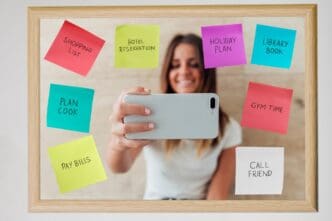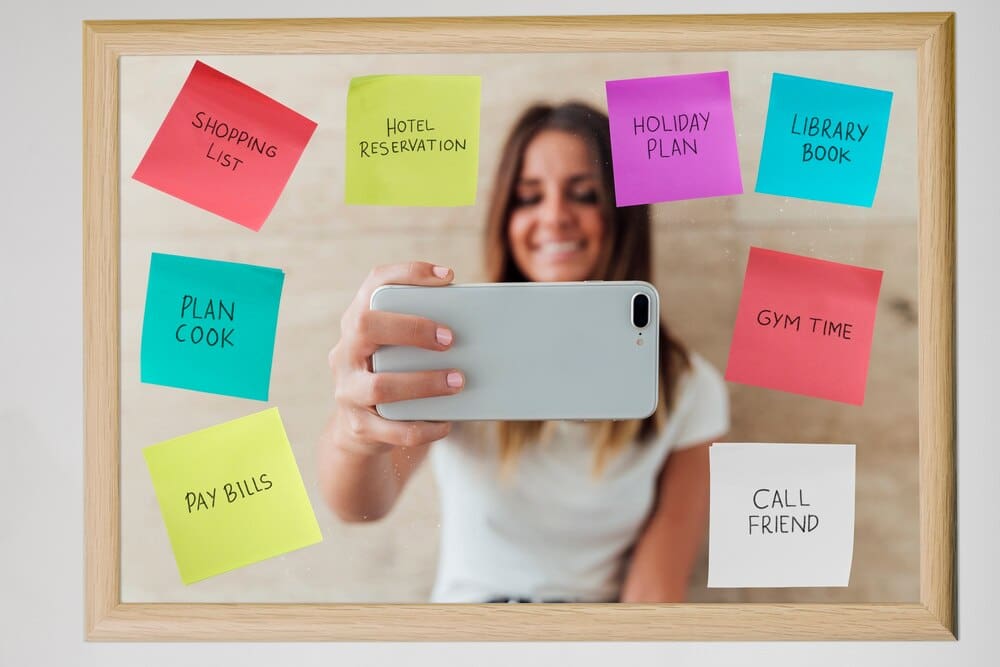For anyone seeking to build a healthier, more vibrant life, a vision board is a powerful tool that transforms abstract goals into a tangible, daily motivator. At its core, a healthy lifestyle vision board is a curated collage of images, quotes, and affirmations that represent your specific wellness aspirations—from the foods you want to eat and the physical activities you want to enjoy, to the mental clarity and restful sleep you crave. By creating and strategically placing this visual map of your future self, you engage powerful psychological principles of visualization and goal-setting, effectively programming your brain to recognize and seize opportunities that align with your health journey. It serves as a constant, gentle reminder of *why* you started, providing the focus and inspiration needed to make sustainable choices day after day.
The Science Behind Why Vision Boards Work
While it might seem like a simple arts-and-crafts project, the effectiveness of a vision board is rooted in neuroscience. The practice primarily leverages a part of your brain called the Reticular Activating System (RAS). The RAS acts as a filter for the massive amount of information your brain processes every second, deciding what gets your conscious attention and what remains in the background.
When you repeatedly focus on specific goals and desires—like the ones depicted on your vision board—you are essentially training your RAS. You are telling your brain, “This is important. Pay attention to this.” As a result, your brain begins to actively scan your environment for information, people, and opportunities related to your goals.
This is why, after deciding you want to start running, you suddenly notice running shoes on sale, hear friends talking about a local 5K, or see a jogging path you never paid attention to before. The opportunities were likely always there, but your focused intention, reinforced by your vision board, brought them to the forefront of your awareness.
Furthermore, the act of visualization itself has been shown to improve performance. Elite athletes have long used mental rehearsal to simulate a successful performance, which activates the same neural pathways in the brain as actually performing the action. When you look at your vision board and imagine yourself feeling strong during a workout or peacefully meditating, you are strengthening the mind-body connection and making it more likely that you will follow through with that behavior.
Getting Started: Your Vision Board Toolkit
Before you begin, you need to decide on the format and gather the necessary materials. The choice between a physical and digital board depends entirely on your lifestyle and personal preference, as both can be equally effective.
Choosing Your Medium: Physical vs. Digital
A physical vision board offers a tactile, creative experience. Its constant physical presence in your space—on a bedroom wall or in your home office—makes it difficult to ignore. For this, you will need a base, such as a corkboard, poster board, or magnetic whiteboard. You’ll also need scissors, glue or pins, and your source materials.
A digital vision board, on the other hand, offers flexibility, privacy, and portability. It can be your phone’s lock screen, your desktop wallpaper, or a private board on an app. This is ideal for those who travel frequently or prefer a more minimalist approach. Popular tools for creating digital boards include Pinterest, which is excellent for gathering inspiration, and Canva, which allows for more customized layouts and designs.
Gathering Your Inspiration
This is the fun part of the process. Your goal is to collect a wide array of images, words, and phrases that evoke the feelings you want to experience in your healthy lifestyle. Look for sources like health and wellness magazines, travel publications, and online platforms like Unsplash, Instagram, and Pinterest for high-quality images.
Crucially, select images based on the emotion they spark. Don’t just clip a picture of a salad; find an image of a vibrant, colorful meal that looks delicious and makes you feel excited about nourishment. Instead of a generic photo of a person on a treadmill, find an image of someone hiking a beautiful mountain trail if that’s what truly inspires you.
The Four Pillars of a Holistic Health Vision Board
To ensure your vision board supports a balanced and sustainable lifestyle, it’s helpful to structure it around the key pillars of well-being. This prevents you from hyper-focusing on one area (like intense exercise) while neglecting others (like rest and mental health).
1. Physical Health & Fitness
This section is about how you want to feel and move in your body. Focus on capability and joy in movement, not just aesthetic outcomes. Include images of people happily engaged in activities you want to try, like dancing, swimming, or rock climbing. You could add pictures of strong, functional bodies, a map of a trail you want to hike, or empowering words like “Consistent,” “Strong,” and “Capable.”
2. Nutrition & Mindful Eating
This pillar represents your relationship with food. Move beyond “diet” culture and focus on nourishment and enjoyment. Use images of farmers markets, vibrant fruits and vegetables, and people cooking or sharing meals with loved ones. Add words like “Nourish,” “Fuel,” “Hydrate,” and “Savor” to remind you to approach eating with mindfulness and gratitude.
3. Mental & Emotional Well-being
Your mental health is the foundation of a healthy lifestyle. This section should represent peace, resilience, and emotional balance. Include images that make you feel calm, such as a serene landscape, a person meditating, or a cozy reading nook. You can also add photos of yourself with friends and family who support you, and affirmations like “I am calm and centered” or “I respond with patience.”
4. Rest & Recovery
In our productivity-obsessed culture, rest is often the most neglected pillar of health. Dedicate a specific area of your board to the importance of sleep and recovery. Find images of a peaceful bedroom, a relaxing bubble bath, or someone enjoying a quiet cup of tea. Use prompts like “Unplug,” “Recharge,” and “7-8 Hours of Sleep” to make rest a non-negotiable priority.
A Step-by-Step Guide to Creating Your Board
With your materials gathered and your pillars in mind, it’s time to bring your vision to life. Follow these steps to create a board that is both beautiful and deeply motivational.
First, take time for quiet reflection to set your intentions. Before you cut or paste anything, ask yourself: How do I want to *feel* in my body? What does energy and vitality look like for me? Write down specific goals that are connected to these feelings. For example, instead of “lose 10 pounds,” a more powerful intention might be, “Have the energy to play soccer with my kids without getting winded.”
Next, curate your content. Sift through all the images and words you’ve collected and be selective. Hold each one and ask, “Does this genuinely inspire and excite me?” If the answer isn’t a resounding “yes,” set it aside. Your board should be a clutter-free space filled only with your most powerful motivators.
Now, arrange and assemble your board. Lay out your final selections on your board before gluing them down. Play with the composition. You might place a central image of your “ideal self” in the middle or organize the board into quadrants based on the four pillars. The visual flow matters, as you want to create something you enjoy looking at.
Finally, add your personal touch. The most powerful vision boards include a photo of you. Choose a picture where you look genuinely happy and vibrant, as this creates a strong personal connection. Also, consider handwriting a few of your key affirmations or goals. Your own handwriting adds another layer of personal energy to the board.
Activating Your Vision Board for Maximum Impact
Creating the board is only half the process. To truly harness its power, you must integrate it into your daily life.
Strategic placement is key. Put your physical board somewhere you will see it every single day, without fail. Your bedroom is an excellent choice, making it the first thing you see when you wake up and the last thing you see before you sleep. Other effective spots include a home office or next to your workout equipment. For a digital board, set it as your phone or computer wallpaper.
Beyond passive viewing, practice active engagement. Spend one to five minutes each day consciously looking at your board. Don’t just glance at it; connect with it. Look at an image, close your eyes, and feel the emotions associated with it. Visualize yourself living out that scene. This daily ritual reinforces your intentions and keeps your goals top-of-mind.
Remember that your vision board is a living document. As you evolve and achieve your goals, your board should evolve with you. Feel free to update it, swap out images, or add new aspirations. This ensures it remains relevant and continues to serve as an accurate reflection of the healthy, fulfilling life you are actively creating.
Conclusion
A healthy lifestyle vision board is far more than a decorative collage; it is a personalized roadmap for your well-being. By clarifying your desires and using the power of visualization to focus your mind, you transform abstract wishes into actionable intentions. It serves as a beautiful, daily testament to the commitment you’ve made to yourself—a powerful tool to guide, motivate, and inspire you on your journey toward a healthier and more vibrant life.







